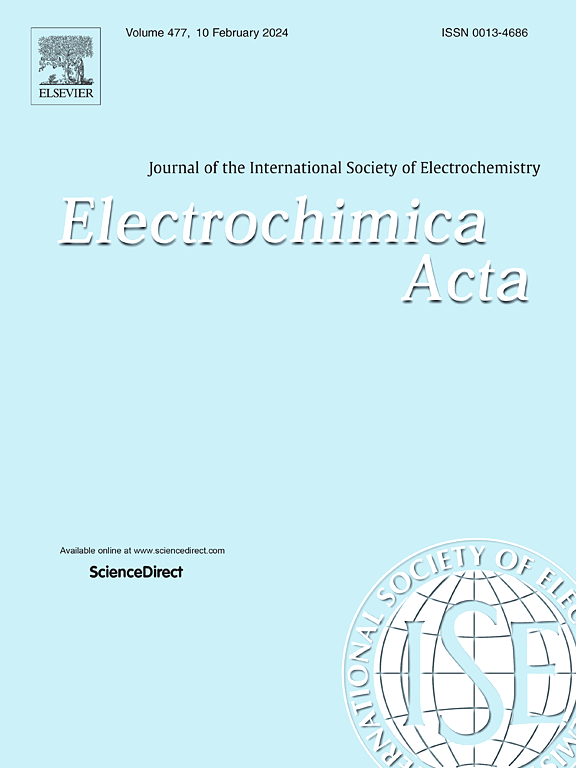Oxygen reduction reaction on Ag nanocatalysts prepared by the microemulsion method
IF 5.5
3区 材料科学
Q1 ELECTROCHEMISTRY
引用次数: 0
Abstract
The microemulsion (water-in-oil) method is used to prepare novel silver catalysts onto three different carbon supports (multi-walled carbon nanotubes (MWCNT), mesoporous carbon (MC) and Vulcan carbon (C)). It allows to control the Ag particle growth and produces particles that range between 2 and 3 nm. The Ag-based catalysts are characterised by scanning transmission electron microscopy (STEM) with energy-dispersive X-ray spectroscopy (EDS). The electrocatalytic activity towards the oxygen reduction reaction (ORR) in 0.1 M KOH is studied using the rotating disc electrode method. High-angle annular dark-field (HAADF) STEM images reveal the Ag particle size range between 1.8 and 2.4 nm, and the EDS mapping shows uniform Ag distribution on the substrates used. Ag1/MC (two-step synthesis) and Ag2/MC (one-step synthesis) catalysts prepared onto the MC support show the highest mass activity of 30–37 A g−1. The two-step synthesis method is preferred to prepare Ag/MWCNT and Ag/C catalysts. The mass activity of the Ag1/MWCNT catalyst is more than two times higher than that of Ag2/MWCNT. Ag1/MWCNT shows the highest electrochemical stability after the accelerated durability test, with only a 6 mV shift in half-wave potential. The microemulsion method is very promising for the production of highly stable Ag-based catalysts with Ag particles smaller than 3 nm in size.
微乳液法制备的银纳米催化剂上的氧还原反应
微乳液(油包水)法用于在三种不同的碳载体(多壁碳纳米管 (MWCNT)、介孔碳 (MC) 和火神碳 (C))上制备新型银催化剂。它可以控制银颗粒的生长,并产生 2 至 3 纳米的颗粒。通过扫描透射电子显微镜(STEM)和能量色散 X 射线光谱(EDS)对银基催化剂进行了表征。使用旋转圆盘电极法对 0.1 M KOH 中氧还原反应 (ORR) 的电催化活性进行了研究。高角度环形暗场(HAADF)STEM 图像显示,Ag 颗粒的尺寸范围在 1.8 至 2.4 nm 之间,EDS 图谱显示 Ag 在所用基底上分布均匀。在 MC 载体上制备的 Ag1/MC(两步合成法)和 Ag2/MC(一步合成法)催化剂显示出 30-37 A g-1 的最高质量活性。两步合成法是制备 Ag/MWCNT 和 Ag/C 催化剂的首选方法。Ag1/MWCNT 催化剂的质量活性是 Ag2/MWCNT 催化剂的两倍多。在加速耐久性测试后,Ag1/MWCNT 显示出最高的电化学稳定性,半波电位仅有 6 mV 的偏移。微乳液法对于生产 Ag 颗粒尺寸小于 3 nm 的高稳定性 Ag 基催化剂非常有前景。
本文章由计算机程序翻译,如有差异,请以英文原文为准。
求助全文
约1分钟内获得全文
求助全文
来源期刊

Electrochimica Acta
工程技术-电化学
CiteScore
11.30
自引率
6.10%
发文量
1634
审稿时长
41 days
期刊介绍:
Electrochimica Acta is an international journal. It is intended for the publication of both original work and reviews in the field of electrochemistry. Electrochemistry should be interpreted to mean any of the research fields covered by the Divisions of the International Society of Electrochemistry listed below, as well as emerging scientific domains covered by ISE New Topics Committee.
 求助内容:
求助内容: 应助结果提醒方式:
应助结果提醒方式:


